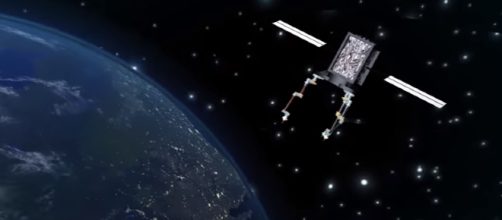One of the characteristics of communications and other satellites that help modern civilization function is that they require fuel to maneuver and stay on station as needed. Once they run out of fuel the satellites become space junk that becomes a hazard to navigation and need replacing at great expense. Now, according to Smithsonian Magazine, NASA’s Satellite Servicing Projects Division is working on technology to refuel old satellites, extending their lifespan, saving money, and cutting down on space junk.
Extending the life of Landsat 7
The first target for NASA’s SSPD is Landsat 7, which has been observing the Earth for the past 18 years and is nearing the end of its operational life.
In 2020, if all goes well, NASA will launch a spacecraft called Restore-L that will repair and refuel Landsat 7, extending its operational life by years or even decades.
The problem is that the Earth observation satellite is not designed to be refueled. Restore-L will include robot arms with tools that will gain access to Landsat 7’s fuel valve, top off its tank, and leave a new refueling port. Restore-L also contains sophisticated navigation technology that will allow it to automatically rendezvous and dock with target spacecraft.
Satellites will be designed to be refueled and repaired
Future satellites will be designed to be refueled, allowing them to spend decades in space, relaying communications, providing GPS services, keeping an eye on the Earth’s surface, and performing other tasks.
They will also be able to be repaired and enhanced by what amounts to orbital roadside assistance spacecraft. The cost savings will be almost beyond evaluation.
Further in the future, refueling and repair vehicles will not even have to come from Earth to do their work. When humans access the vast stores of lunar water and start refining it into rocket fuel, it will serve as a source for refueling missions to satellites orbiting Earth, which will be designed for servicing and the use of liquid hydrogen/liquid oxygen fuel.
What Restore-7 technology can also do
NASA envisions Restore-7 technology for a number of other missions. Its robotic arms can be used to assemble structures in space, everything from huge dish arrays to commercial space stations.
The technology can also be used to handle space junk, either nudging it into the Earth’s atmosphere to burn up or sending it to a recycling center in orbit to be torn down and used to build other products. The era of throwaway spacecraft will, in short order, be coming to an end.


